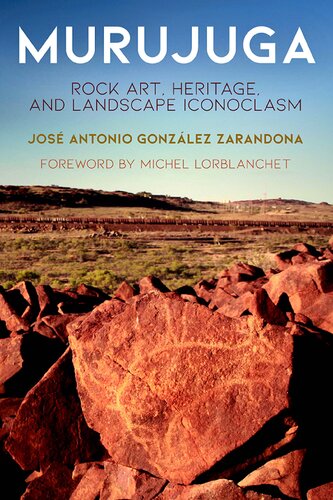

Most ebook files are in PDF format, so you can easily read them using various software such as Foxit Reader or directly on the Google Chrome browser.
Some ebook files are released by publishers in other formats such as .awz, .mobi, .epub, .fb2, etc. You may need to install specific software to read these formats on mobile/PC, such as Calibre.
Please read the tutorial at this link: https://ebookbell.com/faq
We offer FREE conversion to the popular formats you request; however, this may take some time. Therefore, right after payment, please email us, and we will try to provide the service as quickly as possible.
For some exceptional file formats or broken links (if any), please refrain from opening any disputes. Instead, email us first, and we will try to assist within a maximum of 6 hours.
EbookBell Team

0.0
0 reviewsA fascinating case study of the archaeological site at Murujuga, Australia
Located in the Dampier Archipelago of Western Australia, Murujuga is the single largest archaeological site in the world. It contains an estimated one million petroglyphs, or rock art motifs, produced by the Indigenous Australians who have historically inhabited the archipelago. To date, there has been no comprehensive survey of the site's petroglyphs or those who created them. Since the 1960s, regional mining interests have caused significant damage to this site, destroying an estimated 5 to 25 percent of the petroglyphs in Murujuga. Today, Murujuga holds the unenviable status of being one of the most endangered archaeological sites in the world.
José Antonio González Zarandona provides a full postcolonial analysis of Murujuga as well as a geographic and archaeological overview of the site, its ethnohistory, and its considerable significance to Indigenous groups, before examining the colonial mistreatment of Murujuga from the seventeenth century to the present. Drawing on a range of postcolonial perspectives, Zarandona reads the assaults on the rock art of Murujuga as instances of what he terms "landscape iconoclasm": the destruction of art and landscapes central to group identity in pursuit of ideological, political, and economic dominance. Viewed through the lens of landscape iconoclasm, the destruction of Murujuga can be understood as not only the result of economic pressures but also as a means of reinforcing—through neglect, abandonment, fragmentation, and even certain practices of heritage preservation—the colonial legacy in Western Australia. Murujuga provides a case study through which to examine, and begin to reject, archaeology's global entanglement with colonial intervention and the politics of heritage preservation.